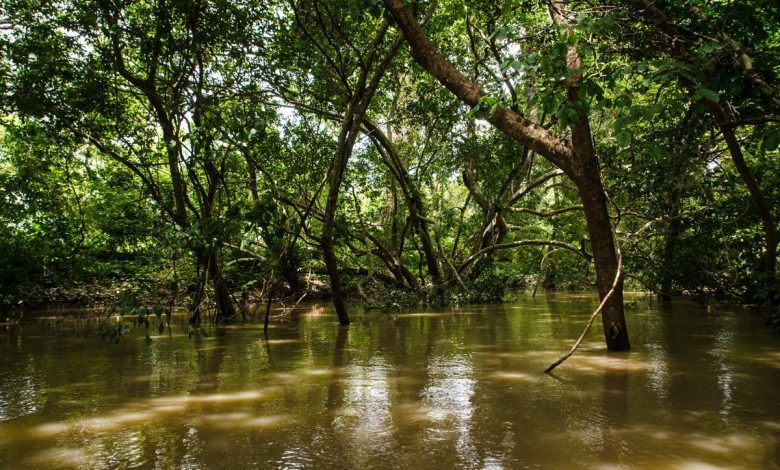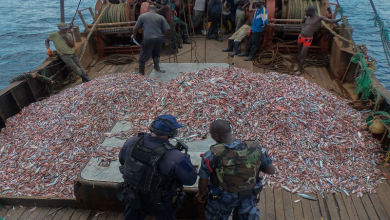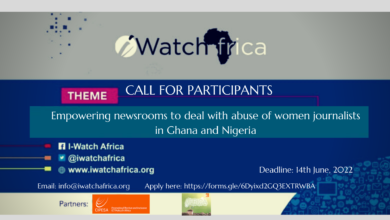
Ocean-Climate Nexus: A Blue-Carbon Pathway for West African States
The ocean is recognised as an essential climate regulator on our planet, absorbing and storing carbon from the atmosphere in a variety of processes. One of these includes what is known as blue carbon.
Blue carbon generally refers to the carbon captured and stored in coastal vegetated habitats, including mangrove forests, seagrass meadows and tidal marshes. Blue carbon is one of the natural processes that helps mitigate the damages of anthropogenic climate change.
However, these coastal habitats are in decline. Currently an estimated 1.9 per cent of mangroves are lost each year globally, resulting in 240 Tg of CO2 emissions – equivalent to emissions from the use of 588 million barrels of oil or from 50.5 million passenger vehicles.
Mangroves in the West African region are also believed to be at risk, with estimates suggesting a 25 per cent loss in the region between 1980 and 2006: an average annual loss of 2-7 per cent in terms of carbon sink.
Despite these declines, West Africa still contains approximately 14 per cent of the world’s mangrove area. Given the benefit of blue carbon sequestration and storage that mangroves and other coastal vegetated habitats provide, it is vital to incorporate blue carbon habitats in climate change policy as a strategy for both maintaining these habitats and conserving significant carbon sequestration capabilities.
So far, only few countries in West Africa have included blue carbon policies in their nationally determined contributions (NDCs) as part of the Paris Accord commitments.
How can West African states move forward to develop a comprehensive policy framework that encourages the protection of coastal ecosystems and requires the inclusion of estimates of sequestration capabilities in decision-making regarding development and the environment?
Challenge – Mainstreaming blue carbon policies in development plans
The biggest challenge to incorporating blue carbon ecosystems in climate development plans are the significant lacunae in what we know about the carbon stored in these ecosystems. Relatively little is known about West Africa’s blue carbon stocks. Although the continent is home to 22 per cent of the world’s mangroves, it is the subject of only 7 per cent of the scientific literature that attempts to estimate values for blue carbon in ecosystems.
Thus, any effort to introduce policy-based measures must first take into consideration environmental based assessments focusing on data and frameworks which quantify the relationships between atmospheric carbon and marine carbon storage.
Some work on this has been done. The UN Environment Program (UNEP) and other research institutions have previously conducted some feasibility work in West Africa, primarily focused on the Ivory Coast. However, there is still a need for broader study of the social and financial benefits of carbon sequestration in marine habitats across the region, as well as for ways in which CO2 can be removed from the atmosphere and marine environment on a sub-national scale.
The importance of more local-level data is due to the fact that decisions on the treatment of blue carbon are made at the sub-national levels, and such information is critical for decision makers as they implement policy on a practical level.
Nevertheless, even with gaps in information, West African countries should still be able to incorporate blue carbon values into their NDCs and local development plans.
Several West African states have existing laws and protocols that do provide statutory authority under which relevant agencies can accelerate readiness-assessment. These laws are important in helping countries identify the appropriate entry points and needs, and they set a clear pathway for blue carbon inclusion in development plans.
The path forward
There are numerous options for West African policymakers to start incorporating blue carbon in their climate priorities and NDCs, as recommended, for example, in the Blue Carbon NDC Guidelines and several other case studies. Effective design and implementation requires dialogue, consulation and cooperation at the local, national and regional levels:
- Policymakers designing updated NDCs that include blue carbon should set out to establish these NDCs within and alongside existing national processes and plans. This promotes consistency across national and subnational development plans.
- NDC policymakers should develop their priorities in close consultation and collaboration with experts from other policy fields, as well as from all relevant ministries and agencies. These can also include local communities, indigenous groups, local and international NGOs, academia, the private sector, among others.
- NDC policymakers should consider costing the various activities within the coastal wetlands’ chapters of their NDCs. This will be necessary for domestic budgetary processes and investment plans. Countries may also consider adopting national and subnational policies that create financial incentives for protecting and conserving blue carbon ecosystems.
- Countries in West Africa should consider improving their regional climate cooperation, e.g., identifying and disseminating lessons learned throughout the region and support each other with the necessary technical assistance. The NDC Partnership initiative is a good place for states to begin.
Read More: Transforming climate finance for debt-distressed economies during COVID-19
Blue carbon ecosystems can directly link local community action with the global climate change effort and the goals of net zero by 2050. Mainstreaming blue carbon at all levels of governance is fundamental to effective and necessary global climate action.
This article was originally published by the European University Institute here.
Gideon Sarpong is a Policy Leader Fellow at the School of Transnational Governance, European University Institute, Florence, Italy. He is also a co-founder of iWatch Africa. His research interests include climate financing, ocean climate policy and internet governance.






